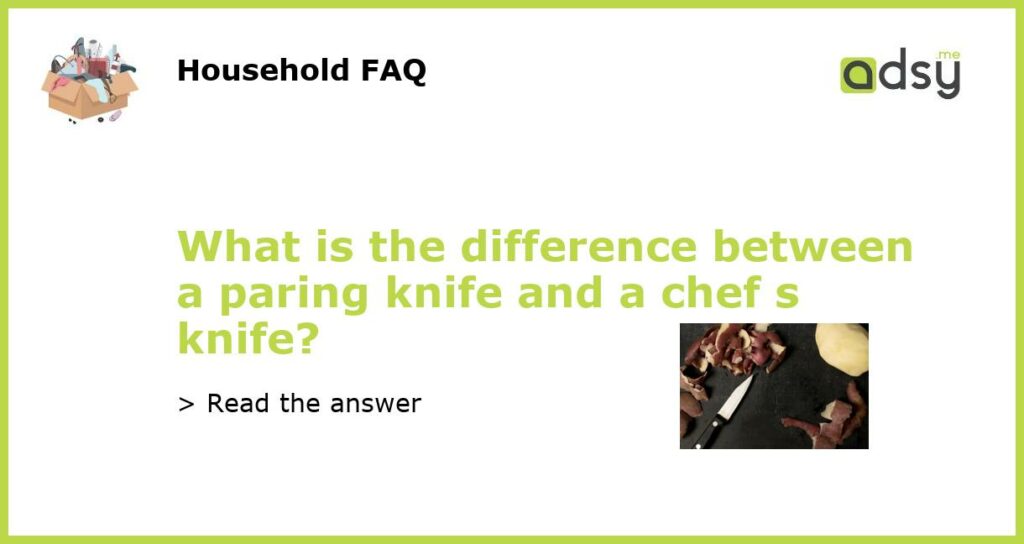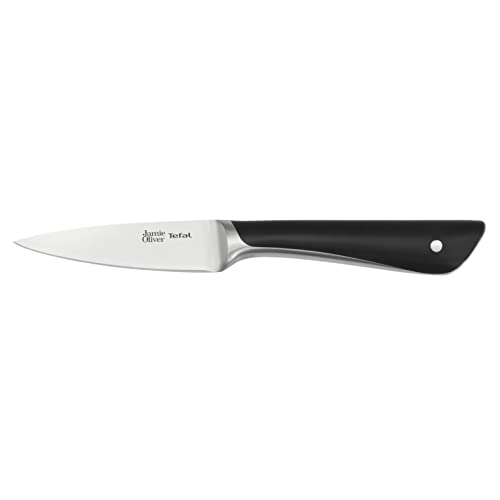The Difference Between a Paring Knife and a Chef’s Knife
When it comes to knives in the kitchen, two of the most essential tools are the paring knife and the chef’s knife. While they may look similar in appearance, these knives have distinct differences in terms of their purpose and functionality. In this article, we will explore the differences between a paring knife and a chef’s knife, helping you understand when and how to best use each one.
What is a Paring Knife?
A paring knife is a small, versatile knife that typically has a short blade with a pointed tip. It is commonly used for intricate tasks that require precision and control, such as peeling fruits and vegetables, deveining shrimp, or trimming excess fat from meat. Paring knives are designed to provide ultimate control and maneuverability, allowing the user to make precise cuts with ease.
A paring knife typically has a blade length ranging from 2 to 4 inches, making it ideal for working with smaller ingredients or performing delicate tasks. The thin and narrow blade profile of a paring knife allows for greater control when making precise cuts, which is especially beneficial when working with smaller ingredients that require delicate handling.
What is a Chef’s Knife?
A chef’s knife, also known as a cook’s knife, is a larger knife with a wide, tapered blade that curves upward towards the tip. It is the workhorse of the kitchen and is commonly used for a wide range of tasks, including chopping, mincing, slicing, and dicing. The curved blade allows for a rocking motion when cutting, making it efficient for repetitive tasks.
Chef’s knives typically have a blade length ranging from 6 to 12 inches, with 8-inch and 10-inch options being the most popular choices for both professional chefs and home cooks. The larger blade surface area and weight of a chef’s knife make it easier to cut through larger and tougher ingredients, such as thick-skinned fruits and vegetables or bone-in cuts of meat.
When to Use a Paring Knife
A paring knife is best suited for tasks that require precision and control. Here are some common uses for a paring knife:
- Peeling fruits and vegetables: The pointed tip and narrow blade of a paring knife make it perfect for removing the skin from fruits and vegetables with precision.
- Trimming and garnishing: Paring knives are ideal for trimming excess fat from meat or fish and creating intricate garnishes.
- Deveining shrimp: The pointed tip of a paring knife allows for easy removal of the vein in shrimp.
- Working with smaller ingredients: Paring knives are great for delicate tasks like hulling strawberries or coring apples.
When to Use a Chef’s Knife
A chef’s knife is a versatile tool that can handle a wide range of tasks in the kitchen. Here are some common uses for a chef’s knife:
- Chopping and dicing: The wide and curved blade of a chef’s knife makes it efficient for chopping and dicing vegetables, herbs, and meats.
- Slicing and mincing: Chef’s knives excel at slicing through ingredients and mincing them into finer pieces.
- Cutting through tough ingredients: The weight and size of a chef’s knife make it easier to cut through tough-skinned fruits and vegetables, large cuts of meat, and even small bones.
- Rocking motion tasks: The curved blade of a chef’s knife allows for a rocking motion, making it perfect for tasks like mincing garlic or crushing herbs.
In conclusion, the main difference between a paring knife and a chef’s knife lies in their size, shape, and intended use. A paring knife is designed for precision and control, making it perfect for intricate tasks and working with smaller ingredients. On the other hand, a chef’s knife is versatile and efficient, making it ideal for a wide range of kitchen tasks, especially those that involve chopping, slicing, and dicing larger ingredients. Ultimately, having both a paring knife and a chef’s knife in your kitchen arsenal will allow you to tackle any culinary challenge with ease and precision.






